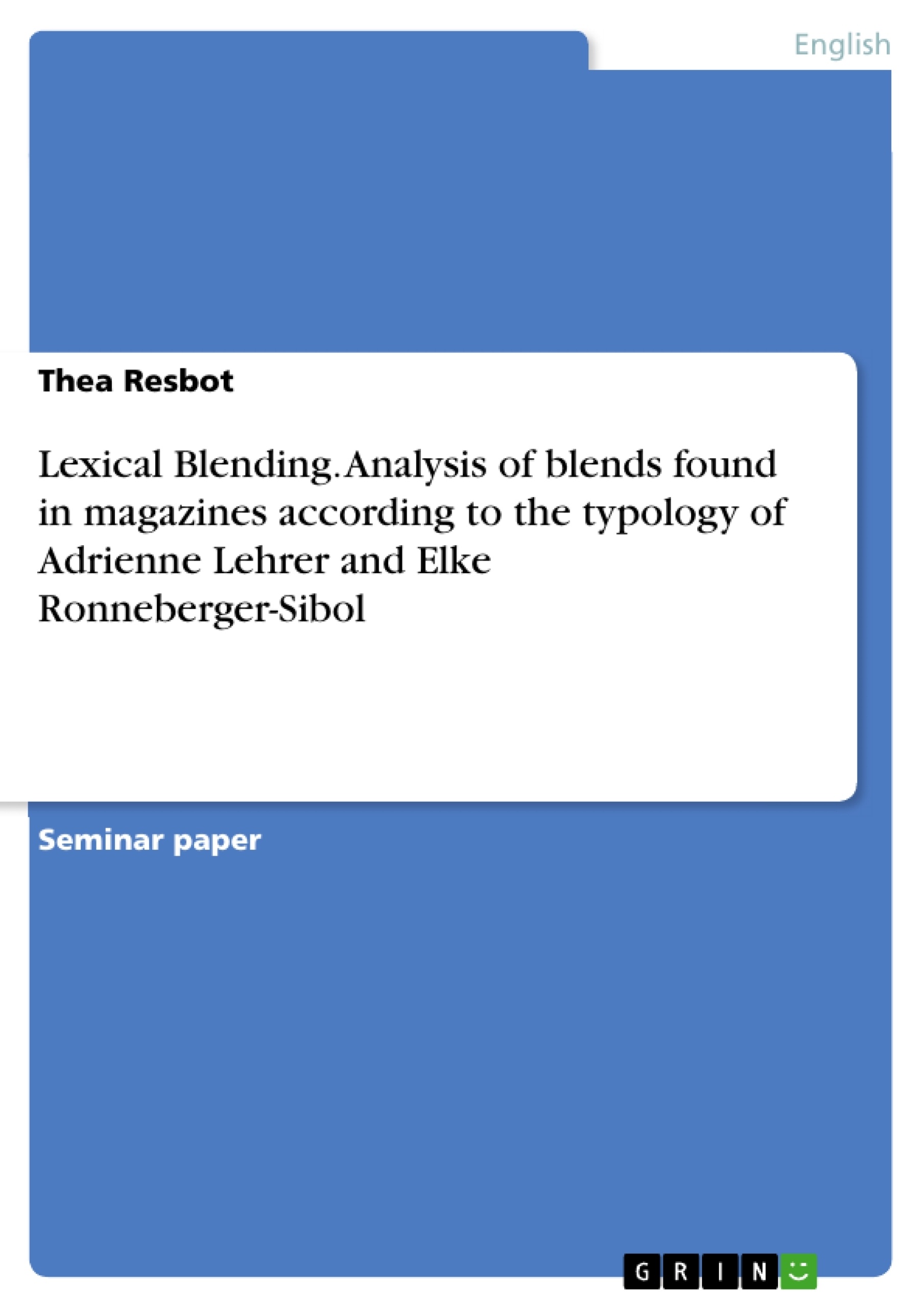This research paper deals with the topic of lexical blending. There, newly created words through this process of word formation are called blends or hybrids or portmanteau words. The latter was popularized in Lewis Carroll’s poem "Through the Looking Glass" in which he, for example, describes a "frabjous day", a day that is both fabulous and joyous. One of the first blends known of, which is still in our vocabulary is the word "smash". It is a blend of "smack" and "mash", which is known since early 1700. "Smash" is a perfect example of a blend that is very well integrated into the modern Standard English. Therefore most likely most people would not have defined it as a blend. So this example indicates, that it is sometimes difficult to identify a word as a blend and moreover to identify its constituents.
Inhaltsverzeichnis (Table of Contents)
- Introduction
- Theoretical Foundation
- The purpose of blends
- Lexical Blending as a process of word formation
- The Research Project
- Description
- Results
- Conclusion
- Bibliography
Zielsetzung und Themenschwerpunkte (Objectives and Key Themes)
This research paper aims to examine the phenomenon of lexical blending, focusing on the formation of new words through this process. The study explores the characteristics of blends and analyzes their occurrence in contemporary magazine publications.
- Lexical Blending as a Word Formation Process
- Typology of Blends
- Analysis of Blends in Magazines
- Comparison of Typologies
- Implications for Language and Communication
Zusammenfassung der Kapitel (Chapter Summaries)
Introduction
This chapter introduces the topic of lexical blending, defining the concept of blends and discussing their historical and contemporary significance. It also highlights the challenges of identifying and analyzing blends due to their often-complex nature and the potential for ambiguity in their meaning.
Theoretical Foundation
The purpose of blends
This section explores the various purposes and functions of blends in language. It examines how blends can be used to shorten phrases, create names for new concepts, or simply attract attention.
Lexical Blending as a process of word formation
This section delves into the morphological aspects of blending, situating it within the broader context of word formation processes. It differentiates blending from other types of word formation, such as compounding and derivation, and explains how blends contribute to vocabulary expansion.
The Research Project
Description
This section outlines the research project undertaken in the study, detailing the methodology and data collection process. It explains how the researchers created a corpus of blends from various magazines, aiming for comparable data from publications within a specific timeframe.
Results
This section will present the findings of the analysis of the corpus of blends, examining the types and characteristics of blends found in the chosen magazines.
Schlüsselwörter (Keywords)
The primary keywords and focus topics of this research include lexical blending, word formation, typology, corpus analysis, magazine language, neologisms, blends, hybrids, portmanteau words, and magazine headlines.
- Arbeit zitieren
- Thea Resbot (Autor:in), 2015, Lexical Blending. Analysis of blends found in magazines according to the typology of Adrienne Lehrer and Elke Ronneberger-Sibol, München, GRIN Verlag, https://www.grin.com/document/388876



